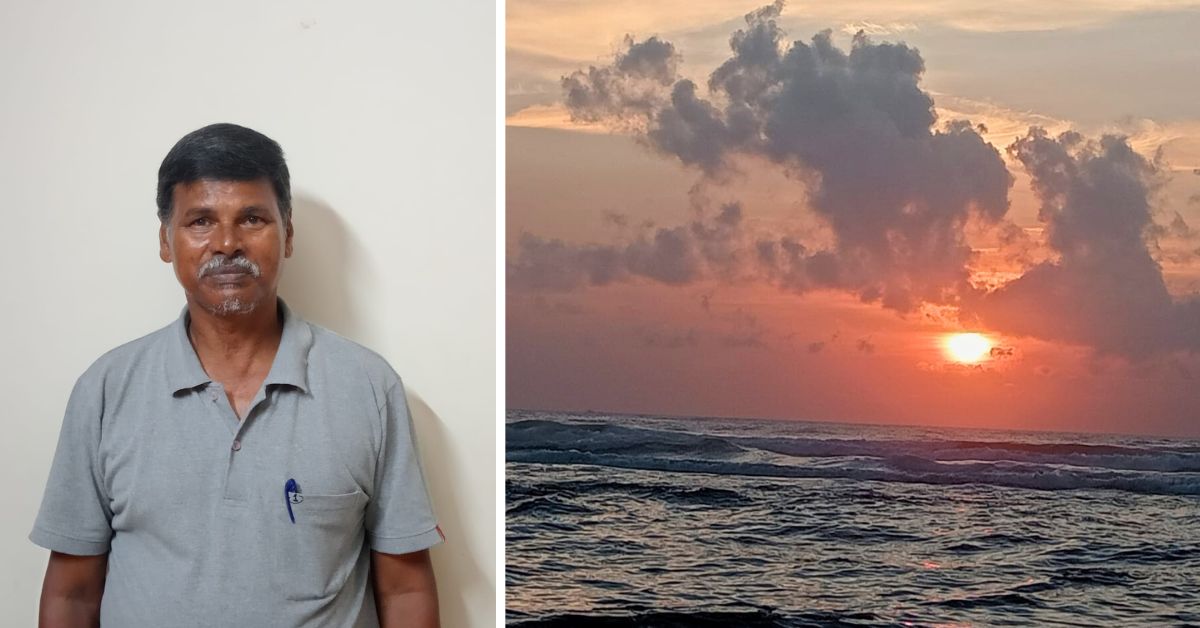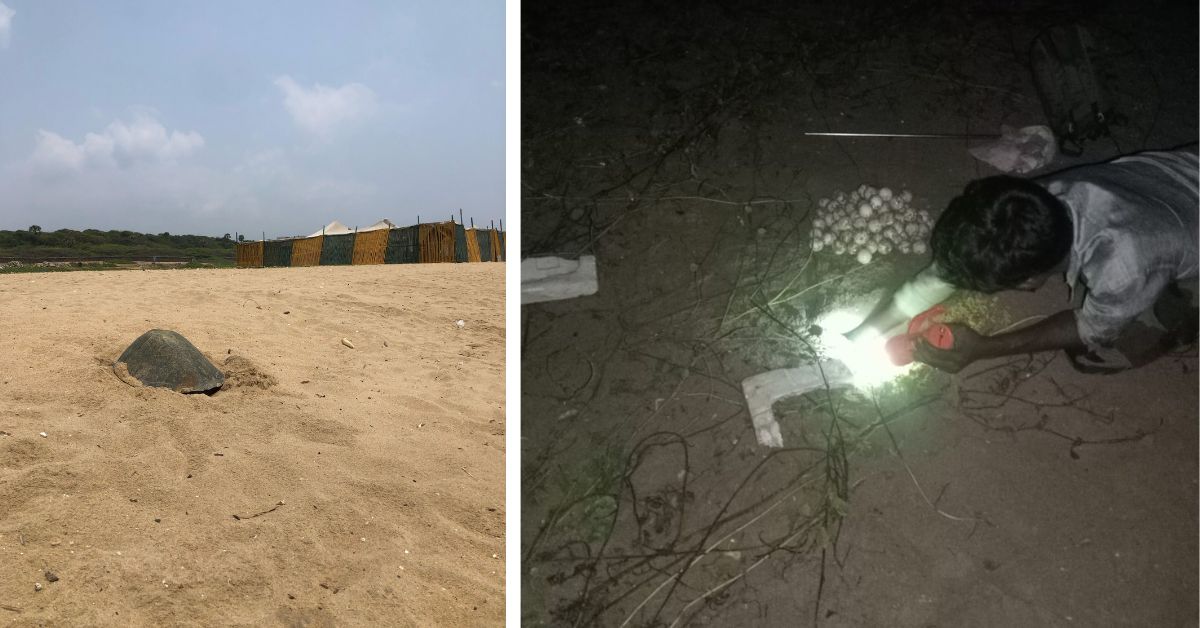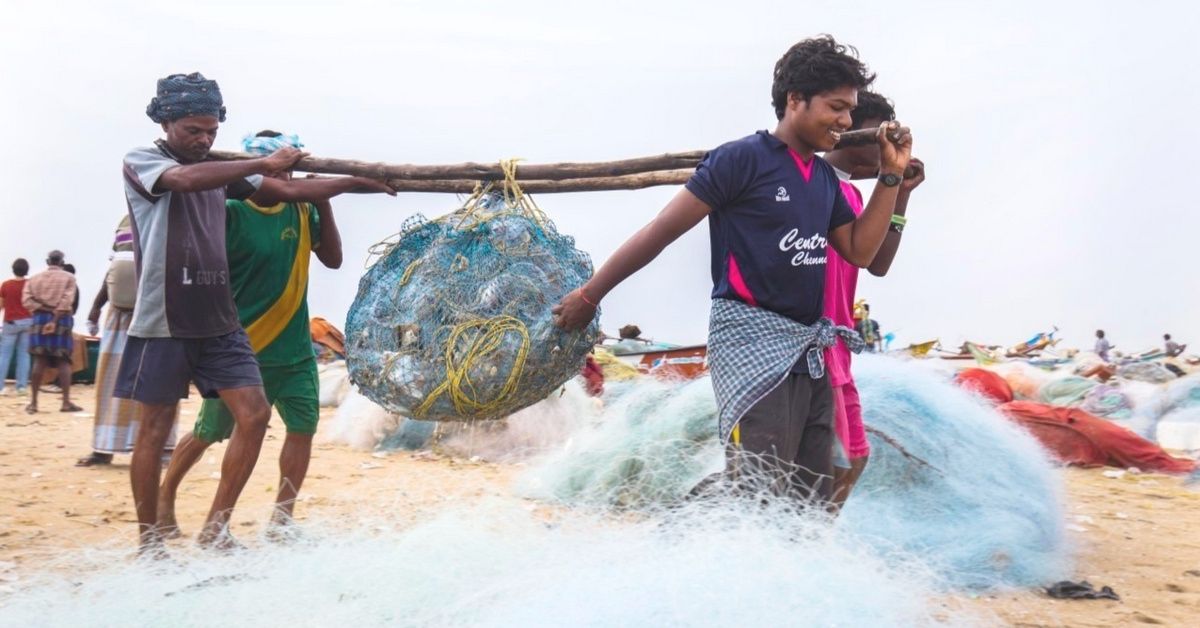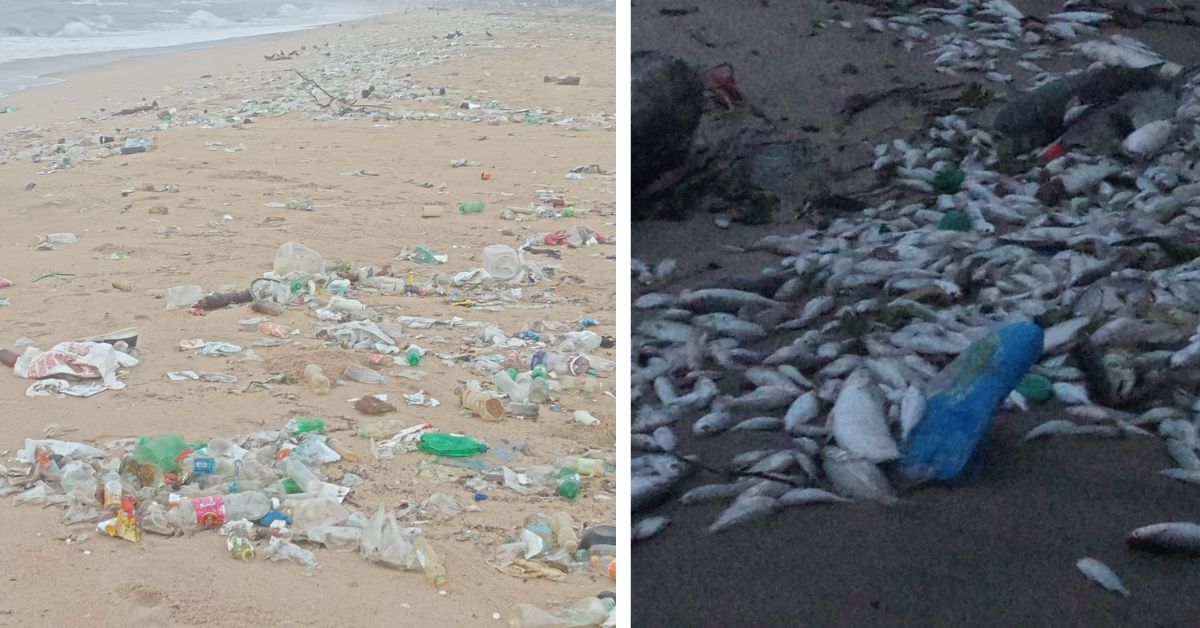How Fishermen in Chennai Are Keeping Olive Ridley Turtles Safe
“Turtles are to fishermen what earthworms and snakes are to farmers,” says Prem Kumar, a 30-year-old Chennai-based NGO coordinator.
His words perfectly sum up the deep relationship Tamil Nadu’s coastal fishing communities have with the Olive Ridley turtles. During nesting season, the turtles represent much more than nature’s beauty—they embody a partnership between fishermen and the sea, woven through generations.
In a world where fishermen are often blamed for marine degradation, these words highlight a lesser-heard narrative of reverence, coexistence, and stewardship.
‘We don’t refer to turtles by their name’
In the eyes of many coastal communities, the Olive Ridley turtle is not merely a species in need of protection; it is a deity, a sign of prosperity, and a vital part of the marine ecosystem. At Urur Kuppam in Besant Nagar, 61-year-old Palayam, a fisherman since his teens and an ocean data collector with Science of the Seas, shares, “We don’t call the turtles by their name. We refer to them as ‘Kutty Amma Saami.’ If one gets caught in our nets, even if the catch is worth Rs 10,000, we tear the nets to set her free.”
 Palayam Anna explains the process of ‘pachai poduthal’, denoting their reverence towards the turtles.
Palayam Anna explains the process of ‘pachai poduthal’, denoting their reverence towards the turtles.
Their reverence goes beyond simple respect. It is spiritual. When a turtle becomes entangled in their nets, fishermen perform a ritual called Pachai Poduthal, a sacred ceremony involving turmeric, vermilion, flowers, betel leaves, and five Ganesha idols, pleading with the turtle goddess not to return to their nets again. Rather than treating it as a loss, they see her visit as a blessing, believing it foretells a bountiful season ahead.
We are all on the same side
While modern narratives often pit conservationists and fishermen against each other, the reality on Chennai’s coast tells a different story. Over the last three decades, SSTCN (Students’ Sea Turtle Conservation Network) has walked hand in hand — literally and metaphorically- with these communities, forging a quiet but strong alliance.
 The fishing community have always been supportive of the turtle conservation efforts.
The fishing community have always been supportive of the turtle conservation efforts.
“Socially, they are aliens now, whereas for us, we have always engaged with them. We have a cordial relationship,” says Arun V, one of SSTCN’s longest-serving coordinators. This relationship has transformed the coastline into a living classroom and a conservation model through night patrols, shared knowledge, and mutual trust.
This collaboration has evolved to the point where fishermen themselves alert SSTCN when nesting turtles are spotted or when eggs are found. Prem recalls, “During the nesting season, if fishermen find a turtle laying eggs, they ensure not to disturb her. They even keep dogs and humans away and inform SSTCN volunteers immediately.” In cases where hatchlings emerge unexpectedly, fishermen cut their own nets to release the tiny turtles into the sea safely.
Traditional vs. trawling: A tale of two fishing worlds
Tamil Nadu’s waters have two starkly different fishing methods: traditional/artisanal fishing and mechanised/trawling. Traditional fishermen, who operate within 13 nautical miles of shore, use small catamarans or boats with selective gear like gill nets, which rarely harm turtles. Their knowledge of tides, currents, and breeding cycles is generational, rooted in observing and respecting marine life.
Prem, who has grown up watching his father fish, explains, “Traditional fishermen don’t go very far. They use nets that sit like curtains in the water, catching specific types of fish. They know which areas to avoid during turtle nesting or mating seasons.” These nets are also usually hauled in quickly, giving fishermen a chance to release any unintended catch, including turtles, almost immediately.
But deeper in the sea, often illegally within the 13 nautical-mile limit reserved for traditional fishermen, operate trawlers, large mechanised boats that drag weighted nets along the ocean floor. These indiscriminate nets trap everything—juvenile fish, dolphins, and turtles. Olive Ridleys, especially during mating season, float closer to the surface or swim in pairs, making them easy prey for these nets.
 It is important to understand the two categories of fishing in Tamil Nadu.
It is important to understand the two categories of fishing in Tamil Nadu.
Prem explains the danger: “Trawlers drop massive nets and drag them across the seabed for hours. They don’t check what’s inside for at least two hours until they haul them up. By then, anything caught, turtles included, has usually drowned.”
Turtles can hold their breath for over 30 minutes, but when entangled, they panic, use up oxygen faster, and drown. Arun notes, “Most turtle deaths we see are due to drowning in trawl nets. The problem isn’t visible to those ashore — it happens far from sight, in the deeper waters.”
Prem adds, “It’s not that all fishermen are the same. Most of us want the sea to flourish. But deep-sea trawling without following appropriate guidelines is destructive.”
Ecological wisdom passed down through generations
The reverence towards these Ridley turtles isn’t rooted in tradition alone. It’s also ecological wisdom passed down through generations. Olive Ridleys feed primarily on jellyfish and seaweed. Jellyfish, often seen as pests by fishermen, can damage nets and kill smaller fish.
“These turtles help maintain a balanced food chain. Where there are turtles, there is good water flow, quality, and more fish,” explains Prem. Turtles are thus indicators of a healthy marine ecosystem — one that sustains the livelihoods of the very people often accused of harming them.
“Without turtles, there’s no fishermen,” Palayam says. “Kutty Amma brings the fish with her. When she comes to lay eggs, the tiny fish get stuck to her belly. This is how we survive,” he adds, highlighting how this also increases the livelihood of the fishing community.
Looking at the real danger
Yet, despite their efforts, fishermen continue to be scapegoated. When images of oil-slicked turtles emerge after environmental disasters, the media seeks quick, digestible outrage. “They wanted us to say the turtle died due to the oil spill,” Arun recalls, “But I said no — it likely died earlier. The problem is deeper: trawling, pollution, unsustainable practices.”
After the Fengal cyclone in November 2024, Payalam was left grappling with an overwhelming amount of plastic waste along the shore. “The water pollution near the broken bridge in Adyar was so severe that many fish perished,” Palayam recalls. “In such conditions, how can we expect the turtles to survive, let alone lay their eggs peacefully?” he asks, his voice filled with concern.
 The Fengal cyclone brought heaps of trash, leading to the death of multiple aquatic species.
The Fengal cyclone brought heaps of trash, leading to the death of multiple aquatic species.
As someone who has been studying and documenting water currents, fish, and almost everything about the ocean, Palayam shares that people who accuse fishermen of being the sole cause for turtle deaths do not have any data to prove so. “With the present direction of water currents, even if a turtle dies in Andhra, it will be washed off only on the shores of Besant Nagar beach in Chennai,” says Palayam.
Hope on the horizon
This year, a record-breaking 48,000 eggs were laid across Chennai’s coastline, with 400 turtles arriving, 100 more than last year. It’s a sign of hope and a reminder of what’s at stake. Conservation cannot be a one-sided conversation. It requires listening to those who live by the sea, hold ancient knowledge, and have been silent guardians long before the world began paying attention.
In Chennai, turtles are not just a species in need of saving. They are symbols of faith, ecology, and continuity. And the fishermen? They are not culprits but caretakers, quietly doing what they have always done: protecting Kutty Amma Saami and the sea she calls home.
Edited by Leila Badyari Castelino; All images courtesy Palayam
News